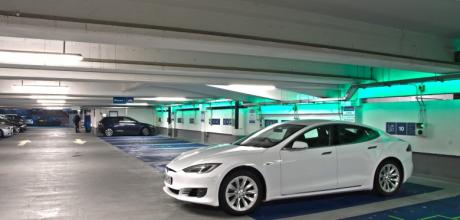We answer your questions on electrified motoring in an easy to understand way

I'm going on holiday for 6 weeks to visit family in Australia, what precautions do I need to take with my EV so that it still works when I get back to the airport?
CURRENT AFFAIRS
So, you’re leaving the country for more than a month, and you’ve recently switched to an all-electric car. How should you leave your electric vehicle to ensure it’s safe while you are away, and it’s ready to drive when you get back? In this article we’ll look into the best tips, along with recommendations from electric vehicle engineers familiar with the science.
To charge or not to charge while away?
Provided there isn’t an EV charger at the car park where you’ll be leaving your EV, you’ll need to ensure the destination is either close enough from home that you’ll arrive and park up with 50% or more in the battery, or top up to just over that amount nearby.
Renault recommends that EV models such as its Zoe shouldn’t be left parked up with any less than 20% charge, but for a longer stay of around six weeks, we’d say a 50% charge is more sensible, and this is a good policy for all EVs.
A charge of around half-full is ideal, because it means there’s no chance of the charge dropping too low during your trip, even if the battery is required to power the car’s electronics or topup its 12-volt battery. It also puts less strain on the battery pack than a 100% charge, helping to extend the useful life of the battery.
If there’s a charging post in the car park that’s specifically designed for long-stay parking, then this could also be an option. Your vehicle’s onboard electronics will manage charging so it never ‘overcharges’ your car, either keeping it at 100% or 80%, if your model allows a capped maximum capacity. The advantage is that there’s no worry about the charge level dropping and you’ll have maximum range for your onward journey.
However, in most circumstances it shouldn’t really be necessary to leave your car plugged in for such extended periods, and it’s a big no-no if you are blocking a communal charger for such a long time, preventing others from using it. Always check with the car park operator that a charger is intended for extended stays beforehand. Nissan also recommends the Leaf is left unplugged, allowing it to enter a low energy mode.
Sleep mode
Some EVs actually have a mode, usually called ‘Power Save’ or ‘Deep Sleep’ designed for exactly this scenario. It essentially tells the car’s onboard computer that you are parking your car for an extended period, so it knows it needs to conserve power. Battery consumers such as software updates and ventilating the cabin are likely to be disengaged, reducing range loss to just 2 or 3% per month in ideal conditions.
Precautions when leaving an EV parked
According to Masato Origuchi, Chief Battery Engineer for Groupe Renault, electric cars “can handle extended periods of inactivity very well, even better than combustion-powered engines, in fact, whose 12-volt batteries can lose some of its charge, and whose fluids and radiator hoses can become damaged.”
There are fewer consumable items fitted to an EV that are sensitive to periods of inactivity, such as the oil, coolant and fuel lines Origuchi refers to. However, there is one piece of advice that applies to both ICE and battery electric models – avoid leaving the car in very high temperatures.
This is unlikely to be an issue in the UK or the rest of Northern Europe, unless there’s a severe heatwave. If there is the possibility of baking temperatures, it’s best to choose a car park that’s covered, either because it’s underground, a multi-storey or it’s fitted with a canopy. Keeping the car and battery pack out of direct sunlight will help avoid the potential scenario where damage could occur.
Other than that, ensure the tyres are correctly inflated – EVs are heavier than equivalent ICE models, so it’s even more important to stay on top of checking that they are at the right pressure. Make sure any slow punctures are repaired, as the last thing you want to return to in the middle of the night is an EV with a flat tyre.
Don’t forget to empty the car of any half-finished drinks or snacks and enjoy your trip!

